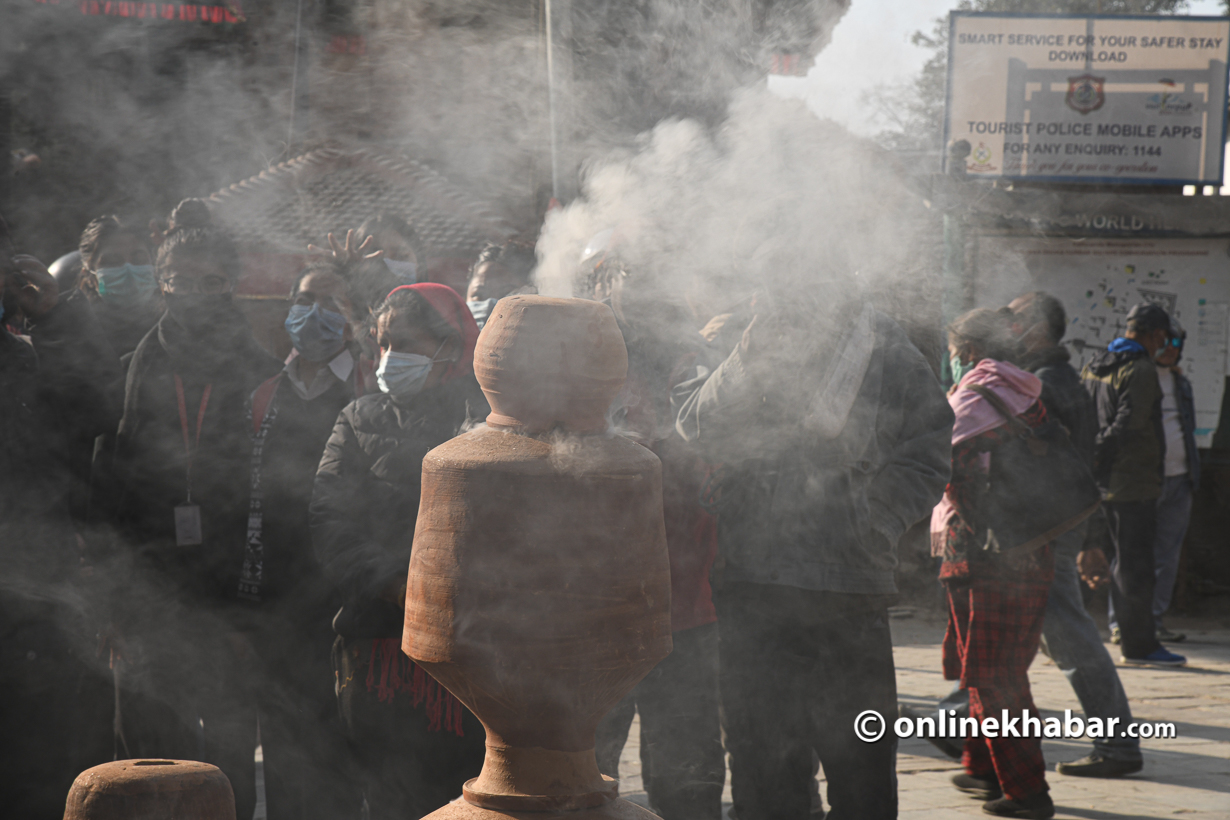Until a few years ago, locals of the Kathmandu valley were seen smashing pots here and there at public places on the day of Mila Punhi or Pousha Shukla Purnima.
That day is today, but of late, the tradition is rarely followed. Only a few people do it in a few places only, or only one place more precisely.
Learning about the story behind this ‘odd’ tradition–referred to as Kalash Yatra–is interesting although one can question its relevance in this age.
Removing the bad omens
This day, the Kalash Yatra of Changunarayan goes to the Taleju temple in Hanumandhoka of Kathmandu every year.
Three people from Bhadel clan bring three silver kalashes (pots)–two smaller ones and one big– all filled with holy water brought from Bagmati near Pashupatinath Temple. The Bhadel clan is believed to be helpers for the Rajopadhyayas, who serve the deity inside the temple. The kalashes they carry are considered manifestations of the god itself.
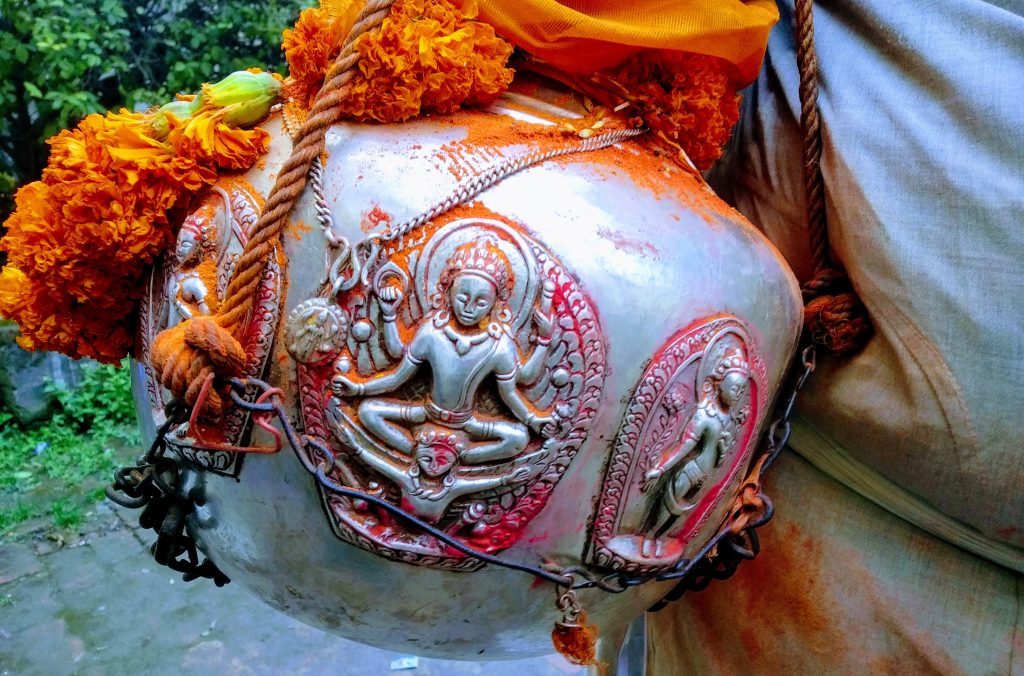
They carry it on their palms or in a kharpan (a bamboo carrier that goes over the shoulders with two baskets at either end, used for load carrying). They travel through the old route that starts from the western gate of the Changunarayan temple, across the Manohara river and through Mulpani-Boudhha-Kalopul-Dillibazar-Ranipokhari-Makkhan to Haumandhoka. They complete the whole four to five-hour journey barefoot.
When the deity passes through a place to reach Hanumandhoka, locals at different places collect and smash pots. This tradition, however, can be seen being held only in Makkhan in recent years.
In the Newa: community, it is believed that when a traveller sees smashed pots, they do not continue their journey as it is considered to be an apasakun or apashagun (bad omen). So, the locals do so to stop the deity from going back to its temple.
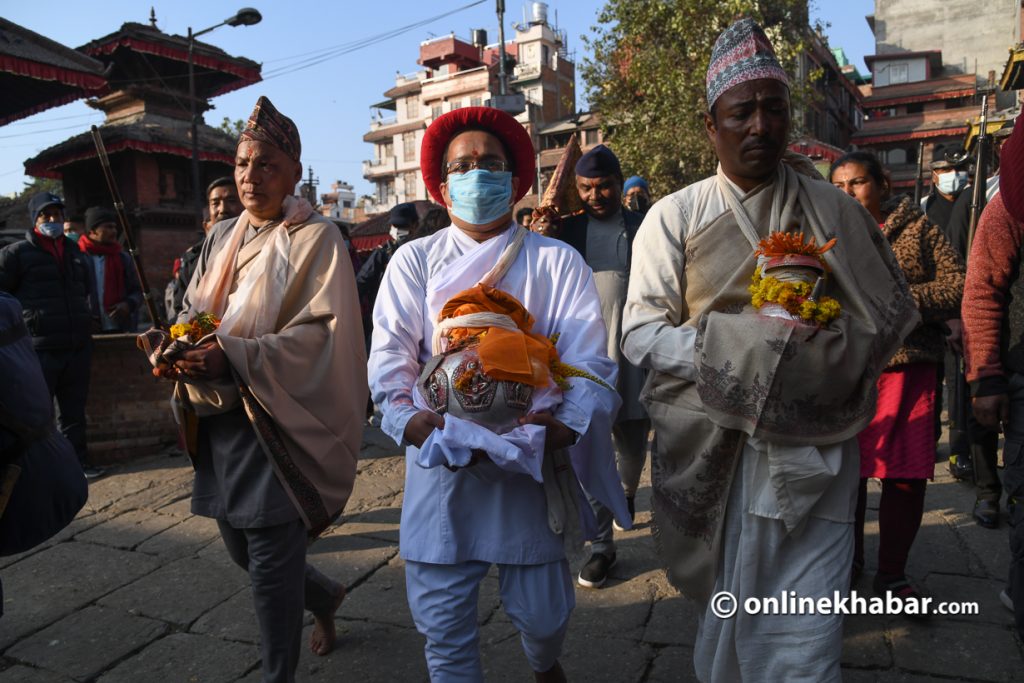
Pranesh Rajopadhyaya, a priest at the Mahendreshwar Mahadev or Sano Pashupati for the past 12 years at Makkhan, recalls, “The tradition was previously followed by all locals where the pots collected would be taller than humans. And we would fear the pots falling on us.” Also, he says, “Earlier, people used to collect the old, worn-off pots they had in the home. But now, they have to buy new earthen pots, just for the traditions.”
Similar traditions can be seen being followed in Sankhu. The day coincides with the start of Swasthani Brata Katha in Sankhu, where the locals take Madhav Narayan to Salkhatol. Like in Makkhan during Changunarayan’s Kalash Yatra, eight settlements in Sankhu also collect and smash pots in their localities and blow on conch after the Madhav Narayan deity passes, on its way to Salkhatol. There also, Salkhatol locals observe the same tradition.
There is another story, says Prajen Bhadel, a local of Changunarayan. “According to the story, it is said that [Changu] Narayan was on his way to leave [his position] because it was Kaliyug. Hearing this, Shree Taleju Bhawani informed the king. After that, the king wanted to stop Narayan by any means. With Taleju’s recommendation, the king ordered to smash pots on his way so that he does not leave. And hence, the tradition follows even today.”
This day is also called Chhyalaa Punhi, a day when the Newa: households throw the old pots away and get new ones.
Other rituals of Kalash Yatra
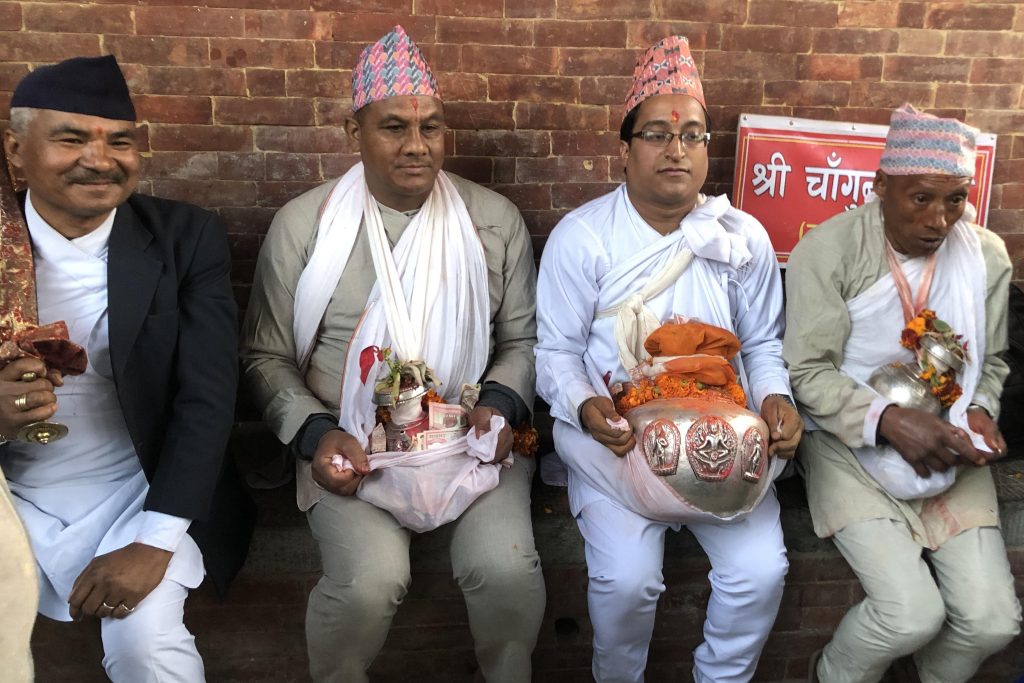
When the deity reaches Jamal, the Gurjuko Paltan, a ceremonial troop, marches from Hanumandhoka to Jamal and escorts it back to Taleju, along with a ceremonial khadga (sword). In Taleju, the deity is welcomed and celebrated like a new bride entering the home.
To witness the ceremony, Living Goddess Kumari also reaches Taleju around the same time.
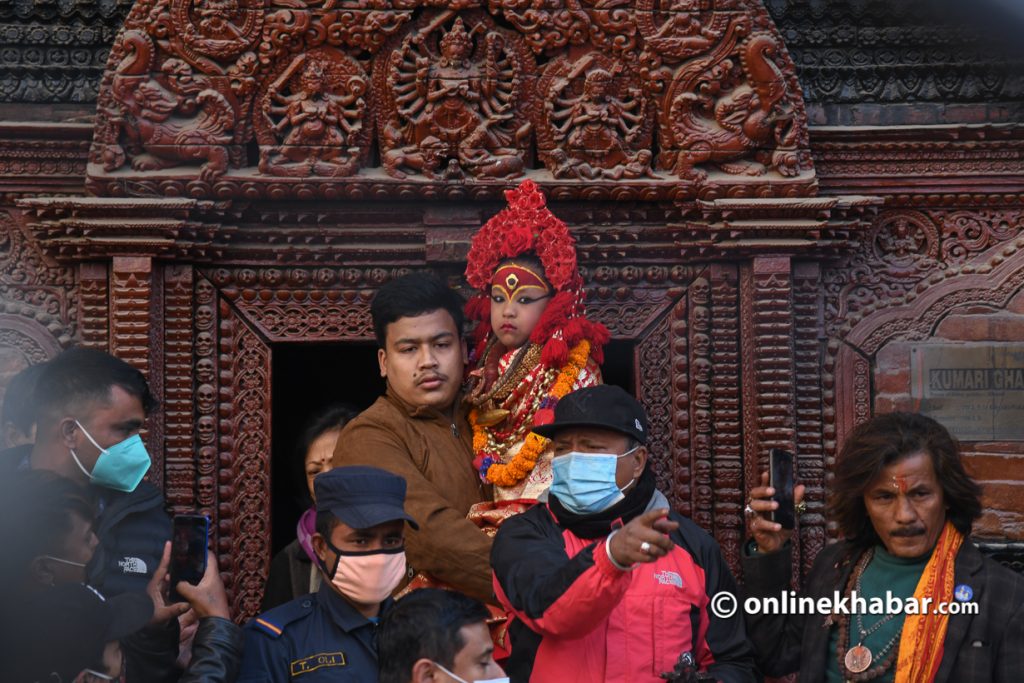
After the puja is concluded inside the Taleju temple, the prasad (offering) is taken to the head of the state. “Hanumandhoka was the palace for kings when the traditions first started. Then, it was taken to Narayanhiti. Now, the prasad is taken to Sheetal Niwas (the President’s Office),” informs a local of Changunarayan, Anish Bhatta.
The Changunaryan deity makes two annual rounds to Taleju. The next visit will be three days before Kwati Purnima during the Nepali month of Shrawan, when the deity is said to come with a message to start soaking the beans for the upcoming festival.
“It is believed the deity comes to Taleju to pay its respects to the goddess and to the kings who resided in the durbar at Hanumandhoka,” says Rajopadhyaya.
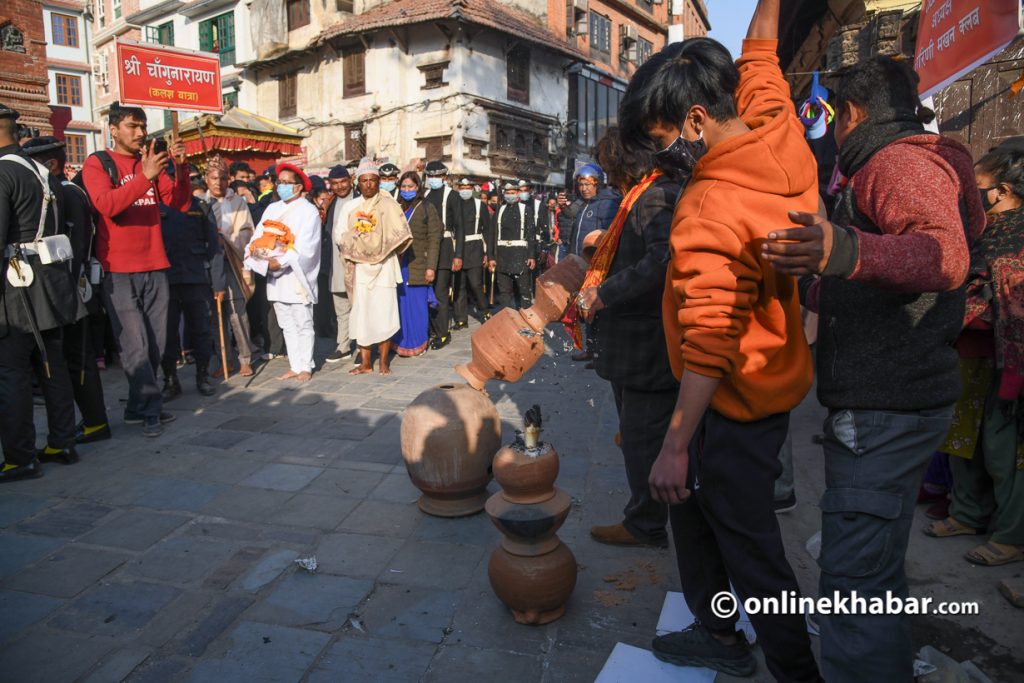
After the puja, they take the kalash and pour its water at Bachakhushi, Shova Bhagwati. Depending on the time all traditions conclude, the Changuranaryan deity either spends the night at Taleju and leaves the next day or the same day, adds Bhatta.
It is said that during the reign of King Manadev I of Lichhavi period, a kind of epidemic was seen. To curb the epidemic, the priests offered sisnu paayas (a kheer-like dish of stinging nettle) to appease the Changunarayan deity. It is said the Kalash Yatra started from that time as well.
This story is mentioned in Govindabamshawali’s letter (page 21). The same is also referred to by history professor Purushottam Lochan Shrestha.



